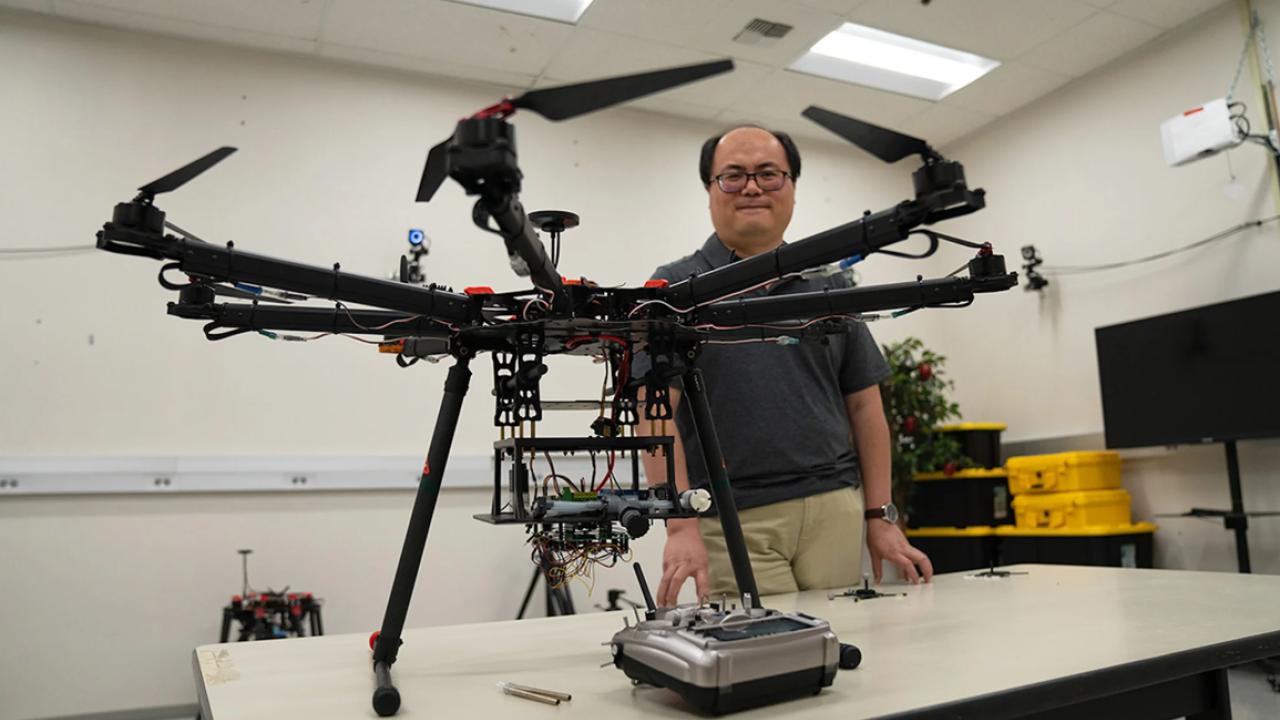
Bridging Minds and Machines: Zhaodan Kong Designs Safer, More Successful Human-Tech Teams
Smoke is the age-old indicator of a wildfire in California. When caught by camera, satellite or watchtower, visible smoke gives authorities the signal to evacuate affected populations and send out containment forces. But in the time it takes to spot the smoke, the flames may have the chance to blaze across acres of land.
Now, imagine: A network of chemical sensors detects a small seeding fire and triggers the deployment of remote-controlled scouting drones. An expert at central command reviews the data to confirm a fire, and authorities receive an alert within minutes, rather than hours. Firefighters reach the scene more quickly, and the blaze is contained before the smoke becomes visible.
This is one of the technological solutions for tangible, real-world issues envisioned by Zhaodan Kong, an associate professor of mechanical and aerospace engineering at the University of California, Davis, and a principal investigator, or PI, at the Center for Information Technology Research in the Interest of Society and the Banatao Institute, or CITRIS. His UC Davis Cyber-Human-Physical Systems, or CHPS, Lab explores cyber-human-physical systems — the complicated ways in which people and computers interact via physical devices — and examines the use of artificial intelligence, or AI, to pursue more complex goals.
As the role of technology in our daily lives evolves, safe and successful partnerships between humans and machines grow increasingly critical to meeting the scale of society's needs. Kong works to develop systems with autonomy, or the ability to function independently in uncontrolled environments. His ultimate goal is technological autonomy that is both assured, meaning its behavior is mathematically predictable, and collaborative, meaning it can respond to input from humans, as well as other machines.
His group investigates a variety of ways in which to improve and implement assured and collaborative autonomy, including human-autonomy teaming, which pairs people with AI-enabled systems in pursuit of a common goal; neural engineering, which integrates biomedical science with engineering principles to understand and improve the function of the human nervous system; and the control and application of uncrewed aerial vehicles, or UAVs, aka drones.
"I believe AI and other technology can be tremendously helpful to solve problems that we are going to face in the future," Kong said, "but we have to be careful about the implications. In some situations, we need a human in or on the loop to make sure that the implementation is ethical, safe, and secure."
